With The Right Precautions And Care, It’s Possible To Grow Melons In Your Garden At Home

Chris is a gardening writer and nature enthusiast. He graduated from Oxford Brookes University in 2022 with an MA in Psychology. Chris works with the Leeds Green Action Society, helping their food cooperative by growing various fruit and vegetables on their two allotments in Hyde Park, Leeds.
Reviewed By ROY NICOL

Roy is a Professional Gardener and Horticultural Consultant, specialising in large garden year-round maintenance and garden development. He is an RHS Master of Horticulture and uses his research in the application of no-dig methods in ornamental garden settings. Roy has been a Professional Gardener for more than six years and is a member of the Chartered Institute of Horticulture, Professional Gardener's Guild and Association of Professional Landscapers (Professional Gardener).
There’s perhaps nothing as refreshing as biting into a slice of juicy watermelon on a hot day.
The cool, hydrating freshness backed by a sweet but not overpowering flavour quite unlike anything else.
Then, moving onto the cantaloupe and honeydew melons, we find distinctly delicious variations on the flavour theme.

Of the many melons Mother Nature has chosen to grace us with, these three are maybe the most famous, but they are far from the only ones.
Now, you may think melons have more exotic origins than UK growing conditions can satisfy? Think again.
With the right precautions and care, it’s possible to get a melon harvest growing here in Britain. And in this guide, we’re going to tell you how to do it.
Overview
| Botanical Name | Cucumis melo |
| Common Name(s) | Melons |
| Plant Type | Fruit |
| Native Area | Cultivated |
| Hardiness Rating | H2 |
| Foliage | Annual |
| Flowers | Yellow flowers from which fruit form |
| When To Sow (Indoors) | April |
| Harvesting Months | July, August, September |
Sunlight
Preferred
Full Sun
Exposure
Sheltered, with protection
Size
Height
0.5 – 1M
Spread
1M (or more, depending on variety)
Bloom Time
July – October
Soil
Preferred
Most Fertile Soil
Moisture
Moisture retentive yet free-draining
pH
Any
The name ‘melon’ refers to various plants and fruits in the family Cucurbitaceae.1Chomicki, G., Schaefer, H., & Renner, S. (2019). Origin and domestication of Cucurbitaceae crops: insights from phylogenies, genomics and archaeology. New Phytologist, 226(5), 1240–1255. https://doi.org/10.1111/nph.16015
Colloquially we say melon to refer to the fruit – usually a fairly hefty, oval affair – although scientifically it refers to the plant as well.
There’s competition between ancient civilisations for the accolade of who introduced melons to Europe, with Ancient Egyptians being favourite contenders until the recent discovery of seeds suggesting that the Nuragic civilisation – Ancient Sardinians – may have beat them to it.2Strauss, M. (2015, August 21). The 5,000-Year Secret History of the Watermelon. National Geographic. Retrieved March 21, 2023, from https://www.nationalgeographic.com/history/article/150821-watermelon-fruit-history-agriculture

Whoever first brought them here, however, it’s safe to say that they’ve become favourites.
And as one of the first crops to become domesticated by humans, and introduced to areas colonised by Westerners in previous centuries, melons have now succeeded in conquering the globe.3Cucurbit Biodiversity I: Cucumbers, Melons, and Gourds. (n.d.). Kitchen of Diversity. Retrieved March 21, 2023, from https://www.sci.muni.cz/botany/nekola/kitchen/bakercreekatoz/cucumber/biodiversity.html
How To Grow Melons
When growing melons in the UK, there are a few things to keep in mind.
First up: only certain varieties are suitable (and, sadly, watermelons are not amongst them!).
Second: you’ll see far better results if you’re able to grow them in a greenhouse or, failing that, under a cloche in a very sunny area of your garden.
Where To Grow
As we alluded to just now, UK melons are quite fussy in terms of where they will grow.
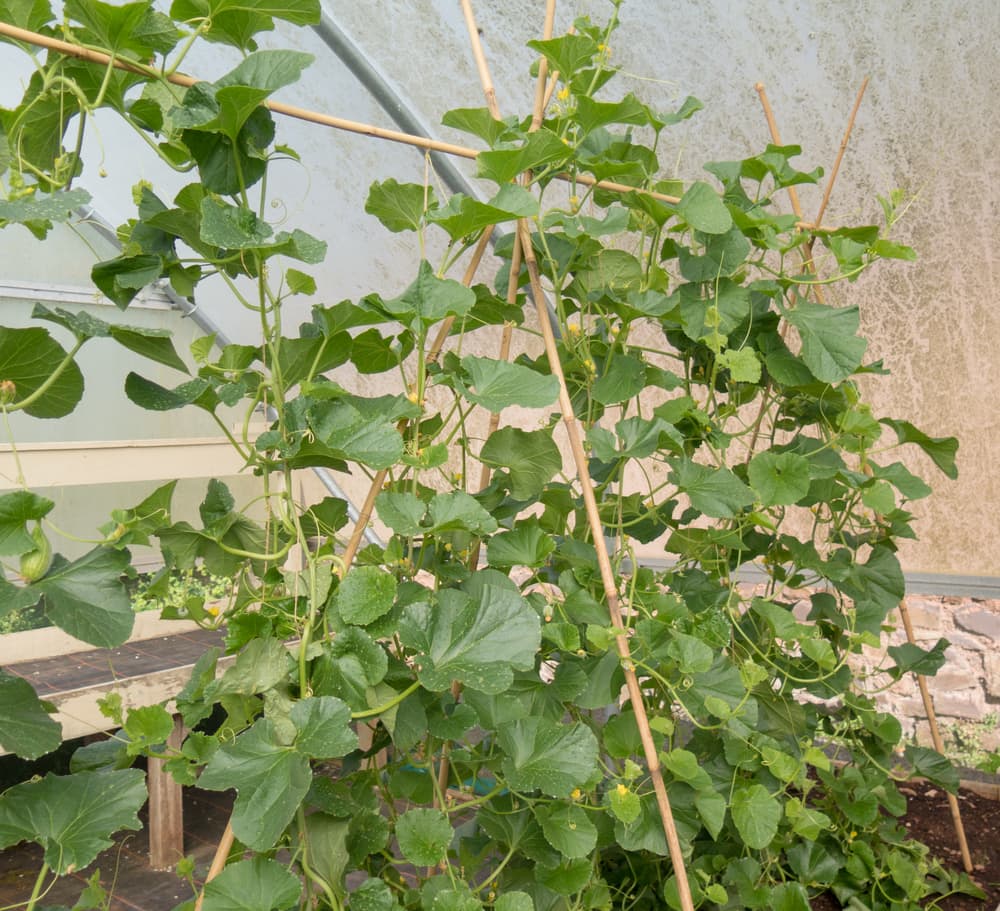
A greenhouse is your best bet, as this most closely simulates the warm conditions they’ve evolved to be used to.
A polytunnel or similar structure will work, too. Just make sure it’s somewhere that traps the heat and humidity.
If you’ve not got the space for one of these structures (or the time to build one), melons will also grow well in a coldframe, or under a cloche.

If using a cold frame or cloche, make sure it’s in a spot that gets full sunlight, is protected against the elements, and is at zero risk of frost.
Melons will not do well at all with frost!
Sowing
Melon seeds will do best if germinated in a propagator.
Sow two seeds for each melon you want to grow (you’ll select the strongest one later), and pop them about 2cm into the soil.
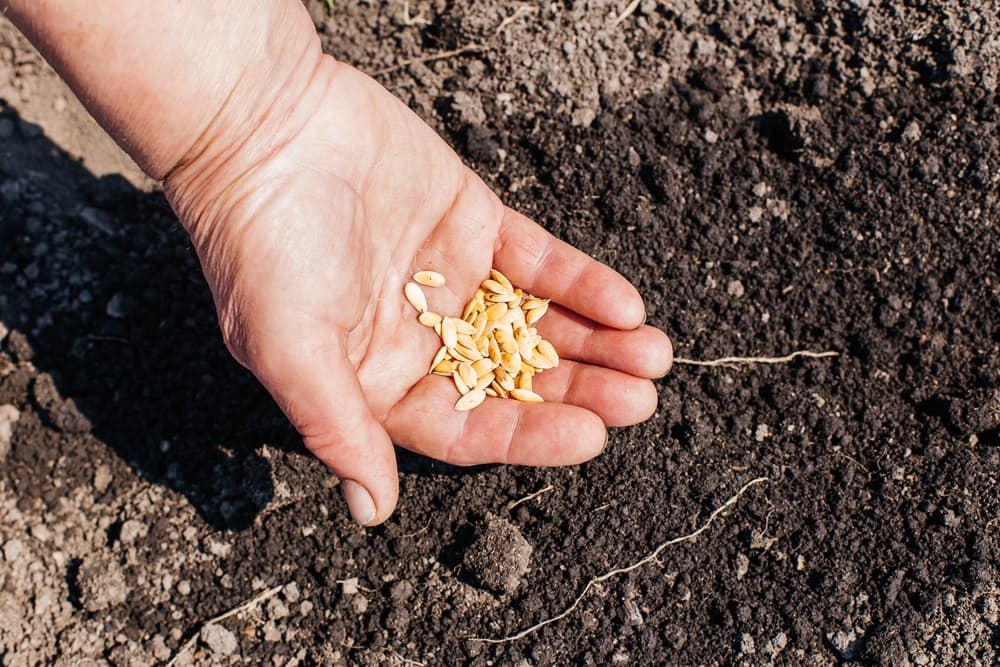
Place the propagator somewhere warm and well-lit, where temperatures will be between 18-22°C – a sunny windowsill is a good bet.
Do this in April.
Planting Out
When your melon seeds have germinated, discard the weakest of each pair.
Then harden off the strongest: keep it outdoors in a pot during the day, and then bring it in at night.
Do this for a fortnight to get the plant used to outdoor conditions without being fully exposed to them.
“If the plants are to be grown in a greenhouse or cold frame, this hardening off can be done inside these so they adjust slowly to life outside the propagator,” shares Horticultural Consultant Roy Nicol.
You can tell when melon seedlings are ready to be planted up, as they’ll have three or four distinct leaves.
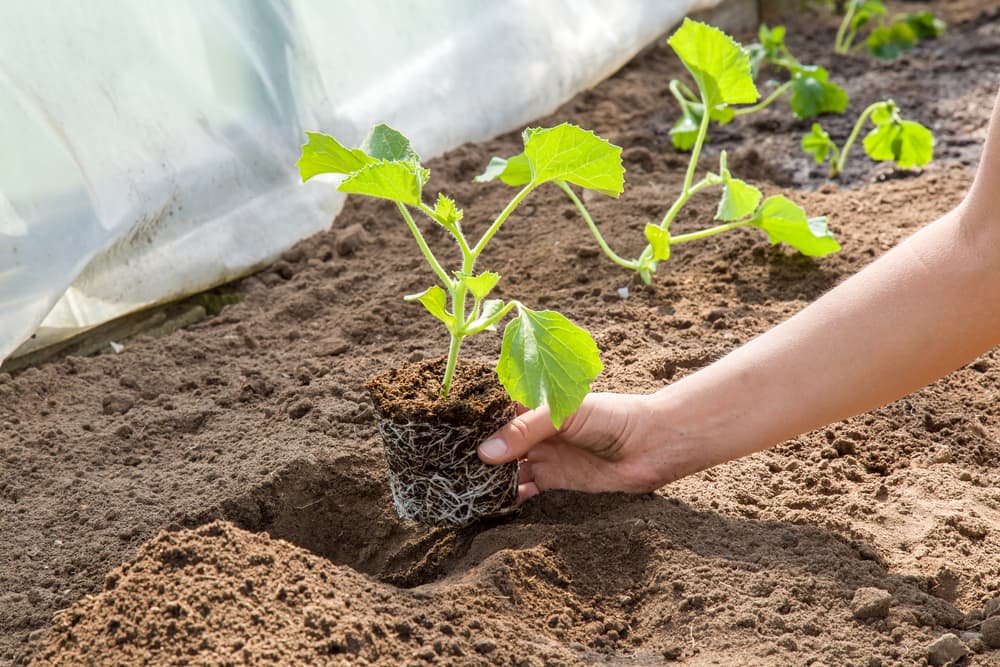
Prepare a spot for each of your melon plants about a month before planting out.
Get rid of all weeds, and work a couple of buckets worth of compost or well-rotted manure through the soil.
Then dress with fertiliser to ensure plenty of nutrients are available to the fledgling plants.
Melons like rich and fertile soil that can drain well while retaining moisture.
Plant your melons into the soil, grow bags or large pots of fertile compost in a greenhouse or cold frame or in the prepared ground if growing under cloches in late May or June after the last frost has definitely passed.
Encouraging Growth
When your melons are planted, pinch above the fifth leaf.
This will encourage side shoots and, when you see these, remove all but the four strongest.
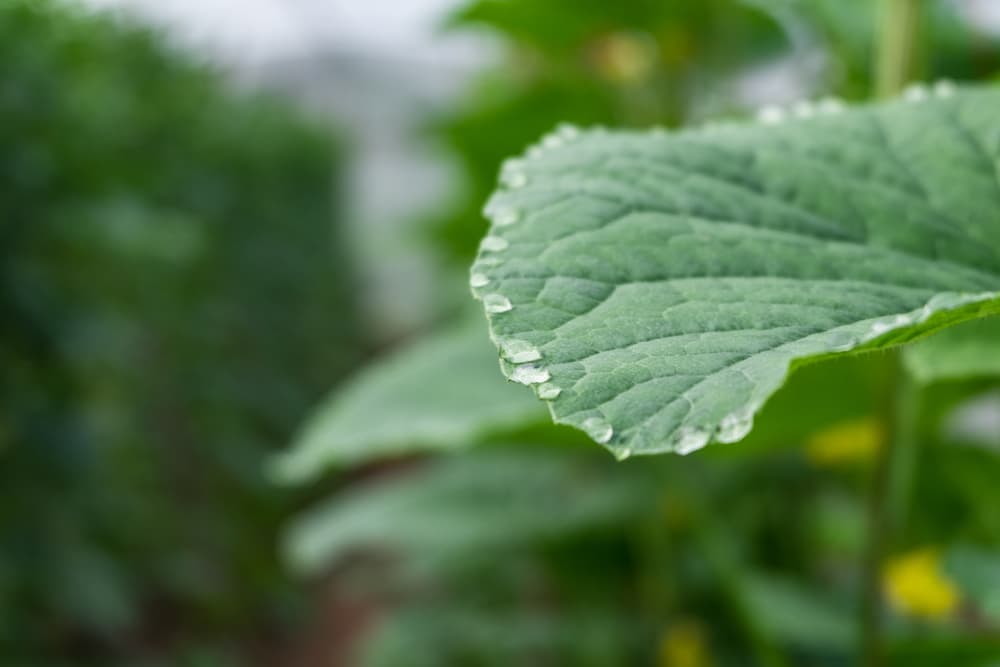
This process helps give your melons the best chance to grow strong and healthy.
Train your shoots to give each one space to grow.
In particularly hot and sunny spells, consider shading the inside of your greenhouse, polytunnel, or coldframe with gauze or similar.
This will shade the melons against the most intense light, and protect them from scorching.
Ensure the place where your melons are growing is well ventilated, to allow pollination to take place.

Unlike some other crops it’s not recommended to pollinate by hand as the flowers are delicate and prone to damage.
When the fruits are about the size of a button mushroom, choose the four strongest ones on each stem and remove the rest.
Make sure to remove further leaves, flowers, and fruits which develop on the plant.
While this may seem a little extreme, it encourages the plant to direct its resources toward making the remaining fruits as big as possible.

Pinch out side shoots that appear beyond these fruits.
You’re essentially trying to stop your plant from spreading its energy too thinly, which will result in a bunch of small, lacklustre melons.
Rest individual melons on a flat, smooth surface rather than allowing them to rest on the soil surface.
This prevents damage to the skin resting on the ground, and leads to a more attractive and healthier fruit at harvest time.
“If the fruits don’t reach the soil and are hanging down, special nets can be bought to support the developing fruit – alternatively an old pair of tights works well,” shares Roy.
Watering
Melons need to be kept well watered all the time.
Water the soil and roots rather than the areas of the plant above the soil surface.
Fertilising
Your melons are hungry plants, and will need to be fed every week or so with liquid fertiliser.

You’ll know when it’s time to start feeding them as the fruits will be just below the size of an egg.
Harvesting
Here we are, at perhaps the most exciting part of this guide!
Your melons are ready to harvest when they begin to put forth that delicious melon aroma.
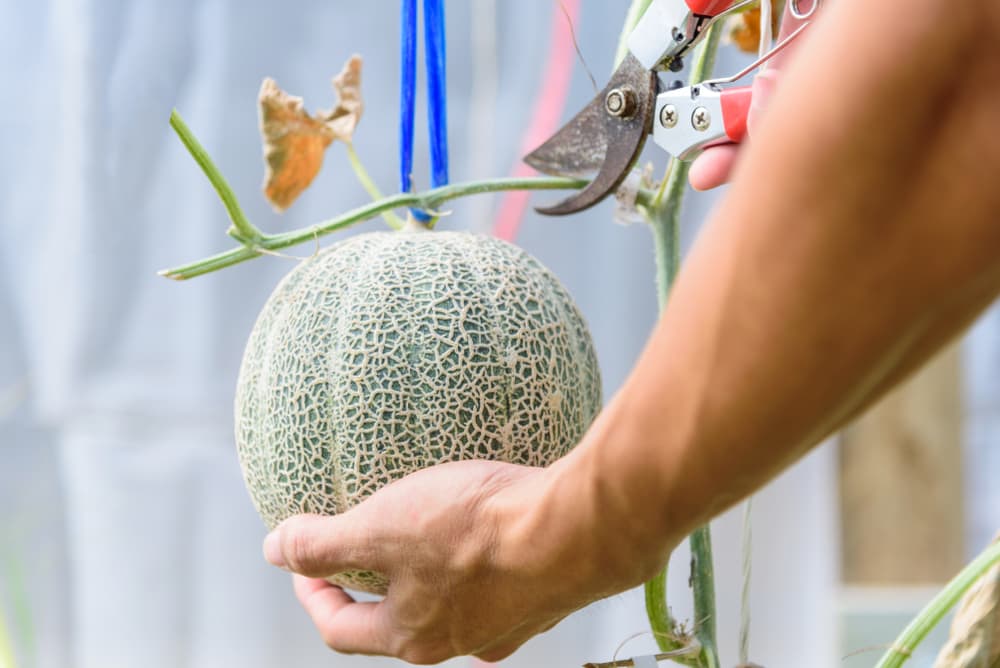
The fruits may start to crack, too.
Simply remove the melons from the stem and bring them indoors. They’re ready to use straight away!
Common Problems
Melons are, sadly, not exempt from visitations from pests in your garden.
Greenhouses and other hot growing environments bring their own challenges, so here’s what to look for.
Glasshouse Red Spider Mites
If you notice a thin film of webbing over parts of your melon plant and a pale mottling on the upper side of the leaves, you could have Red Spider Mites.
You may be able to see the tiny mites on the under side of leaves rampantly feasting on browned and wilting leaves.
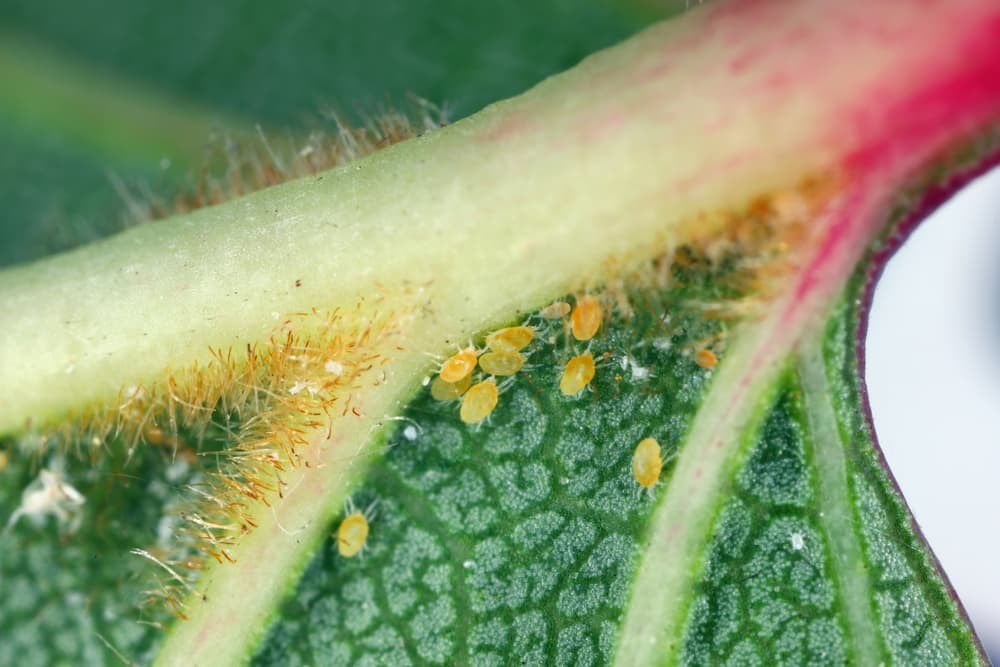
With this pest, prevention is the best cure.
Spritz your melon plants regularly with mist to keep things moist, water the floor of the greenhouse in the mornings and avoid the dry conditions that these visitors like to exploit.
Powdery Mildew
If you see spots of white powder, almost mould-like in appearance, on the leaves of your melon plant, it’s likely you’ve let the soil get too dry, or the air too hot.
“Again, prevention is the best cure and maintaining watering at the roots of the plant is the most effective way to prevent powdery mildew forming,” adds Roy.
Brush it off and rectify these two issues to see if the problem is resolved.
If not, you may need to remove and destroy affected sections.
There you have it: everything you need to get a tasty bunch of melons growing in your garden.
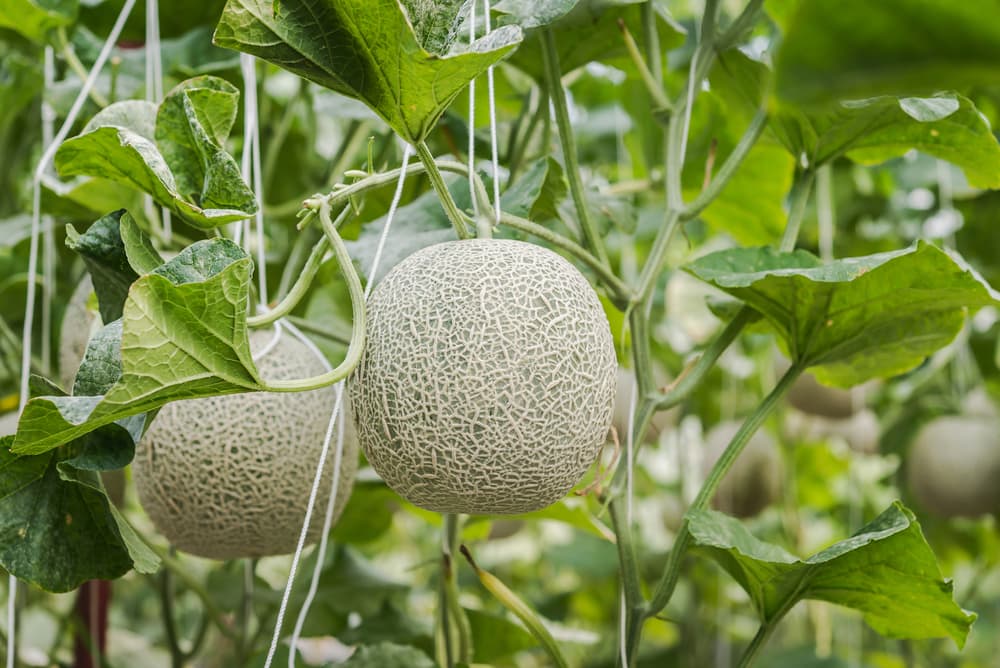
While they need a little more TLC than some other plants you could grow, there’s a special charm to tending a crop that isn’t quite at home here.
References
- 1Chomicki, G., Schaefer, H., & Renner, S. (2019). Origin and domestication of Cucurbitaceae crops: insights from phylogenies, genomics and archaeology. New Phytologist, 226(5), 1240–1255. https://doi.org/10.1111/nph.16015
- 2Strauss, M. (2015, August 21). The 5,000-Year Secret History of the Watermelon. National Geographic. Retrieved March 21, 2023, from https://www.nationalgeographic.com/history/article/150821-watermelon-fruit-history-agriculture
- 3Cucurbit Biodiversity I: Cucumbers, Melons, and Gourds. (n.d.). Kitchen of Diversity. Retrieved March 21, 2023, from https://www.sci.muni.cz/botany/nekola/kitchen/bakercreekatoz/cucumber/biodiversity.html
